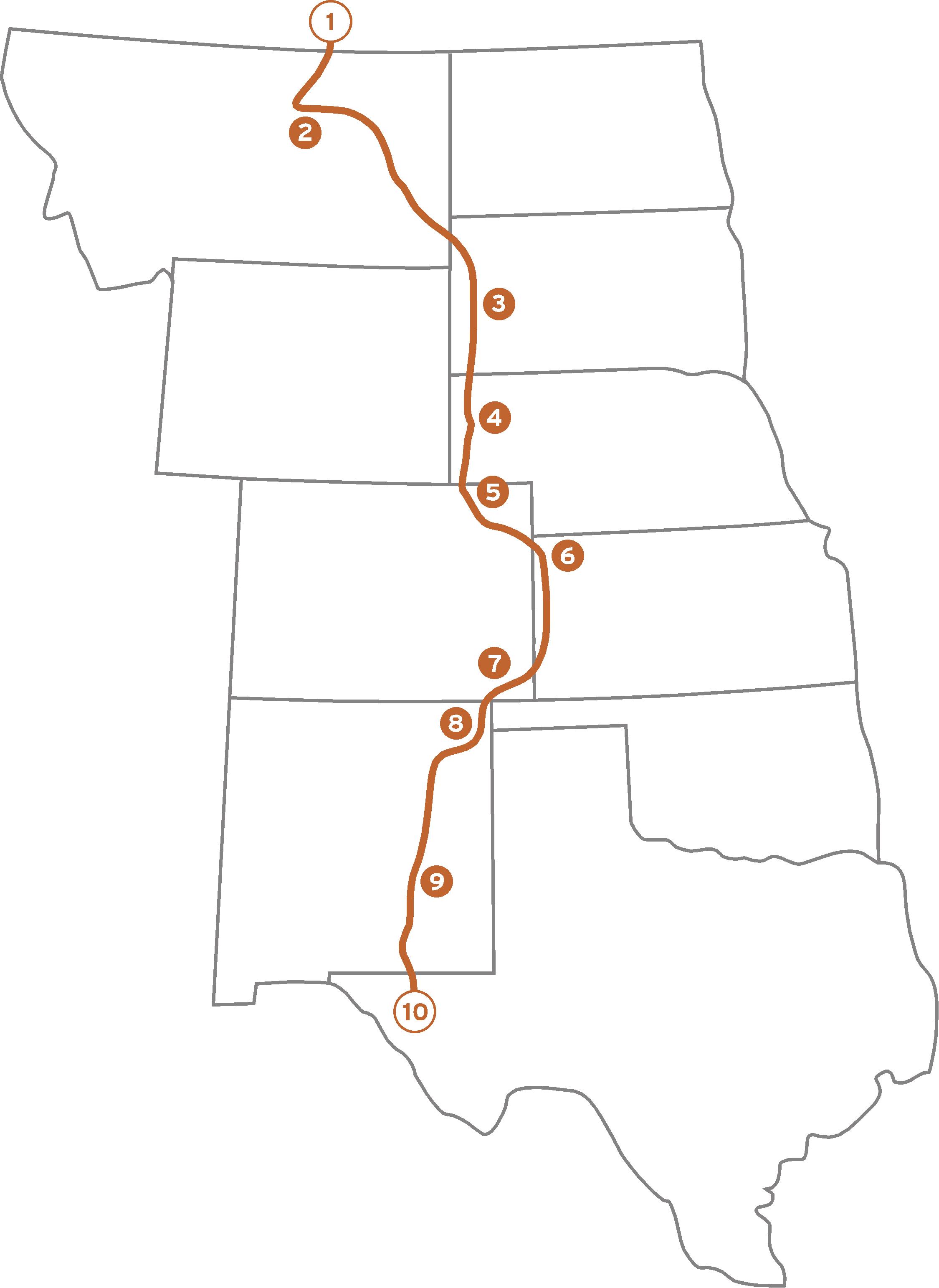 Continuing our adventures with the rivers of the Great Plains, the next major river as we head south from the Yellowstone is the Platte River. The Platte is really the joining of its two main tributaries, the North Platte and the South Platte. The headwaters for both of these branches is in the high country of Colorado. The North Platte first flows north into Wyoming and then east to where it joins the South Platte in Nebraska. All told, the rivers are over 1,000 miles long and drain an area of some 85,000 square miles (about the size of Idaho).
Continuing our adventures with the rivers of the Great Plains, the next major river as we head south from the Yellowstone is the Platte River. The Platte is really the joining of its two main tributaries, the North Platte and the South Platte. The headwaters for both of these branches is in the high country of Colorado. The North Platte first flows north into Wyoming and then east to where it joins the South Platte in Nebraska. All told, the rivers are over 1,000 miles long and drain an area of some 85,000 square miles (about the size of Idaho).
After leaving the Rockies, the Platte is essentially a lazy river and was originally named by the French who gave it the French word for “flat.” Much of the main river flows through a wide valley in central Nebraska, and the river spreads itself out to fill the valley. In the process, it loses some velocity as well as depth.
As a result, pioneers of the 1800s had some colorful sayings which they attributed to the river. One was that the river was “a mile wide and an inch deep.” It’s a saying that has come to describe a great many things besides rivers, and it shows why the Platte was never used for navigational purposes other than to travel along its banks. The other saying was that the river was, “too thick to drink, but too thin to plow.” An apt description if you’ve ever seen the river, and also shows the two things at the forefront of so many pioneer’s minds as they traveled through the dry regions of the country looking for a place to call home.
Today, Interstate 80 parallels much of the main river through Nebraska, but nature still puts on a grand spectacle here twice a year. The semi-annual sandhill crane migration returns to the Platte River valley each spring and fall. As many as 500,000 birds descend upon the valley and rest their wings as they converge from various points around the continent. It’s an amazing wildlife spectacle that, for sheer numbers of birds, is unrivaled in North America. These are impressive birds too: They stand three feet tall, weigh ten pounds, and have a wingspan of 6 feet! The spring migration is peaking about now (late March/early April), so if you’re anywhere near the Platte River in central Nebraska, check ’em out!



4 Responses
James Michener’s “Centennial” has some good descriptions of the Platte River and its importance to the region.
I believe it was also a 70s TV miniseries if my childhood memories serve me correctly.
Indeed it was!
10 years back in biology, our teacher offered extra credit for those who would go and photograph the crane migration. 10 years back… Damn do I now feel old.